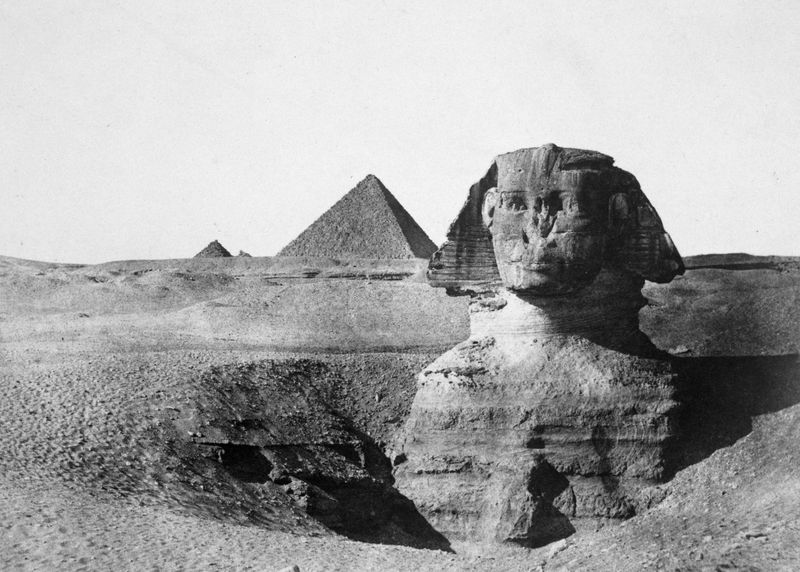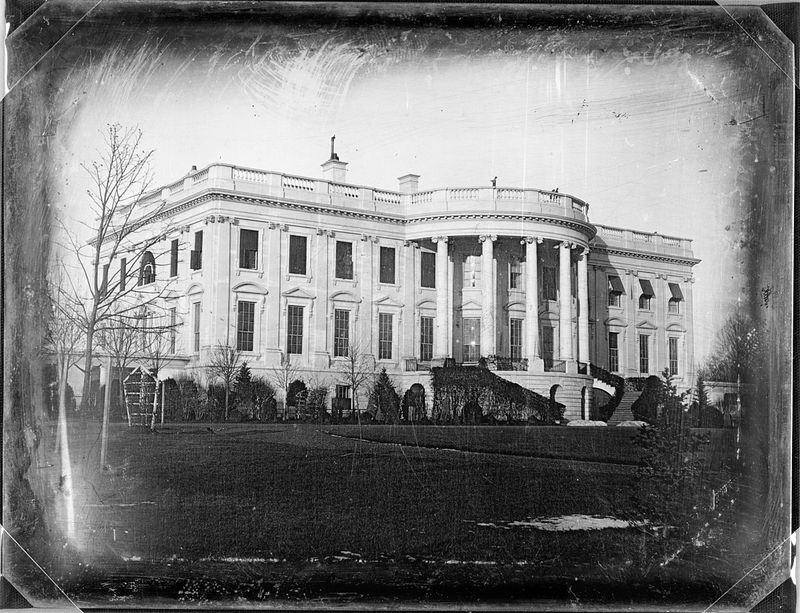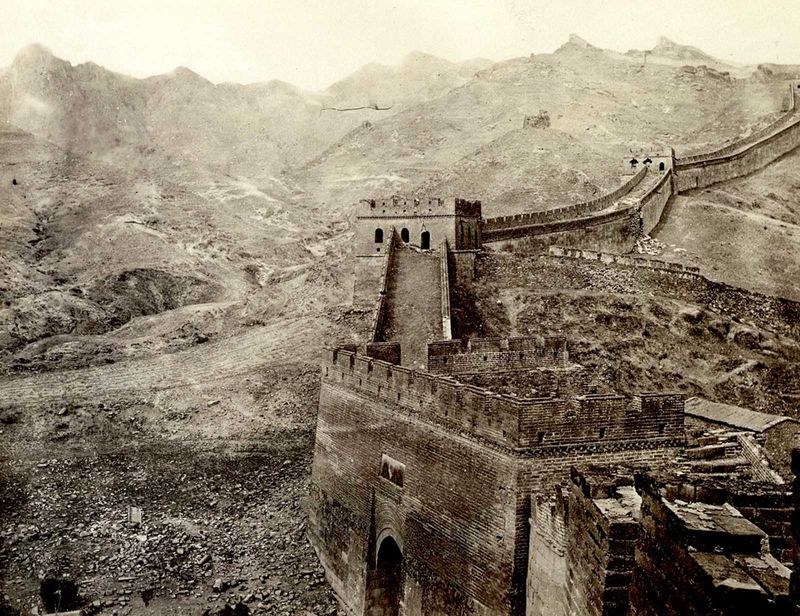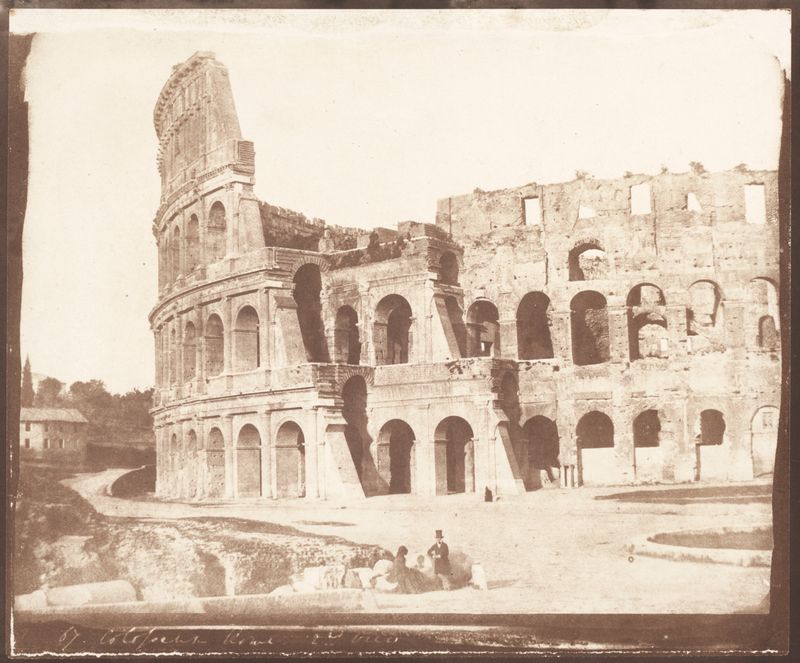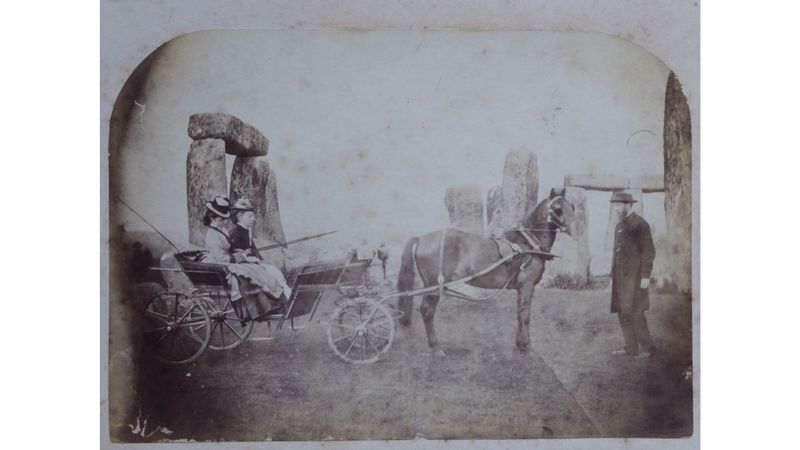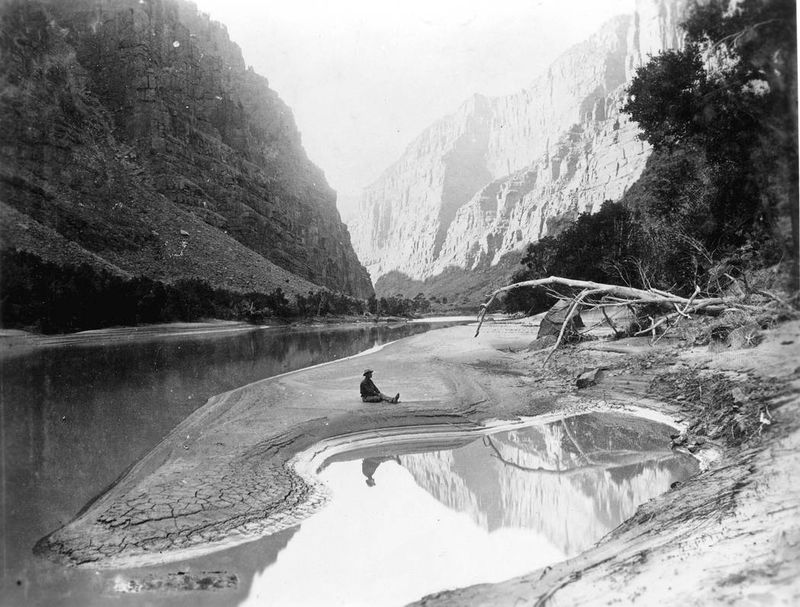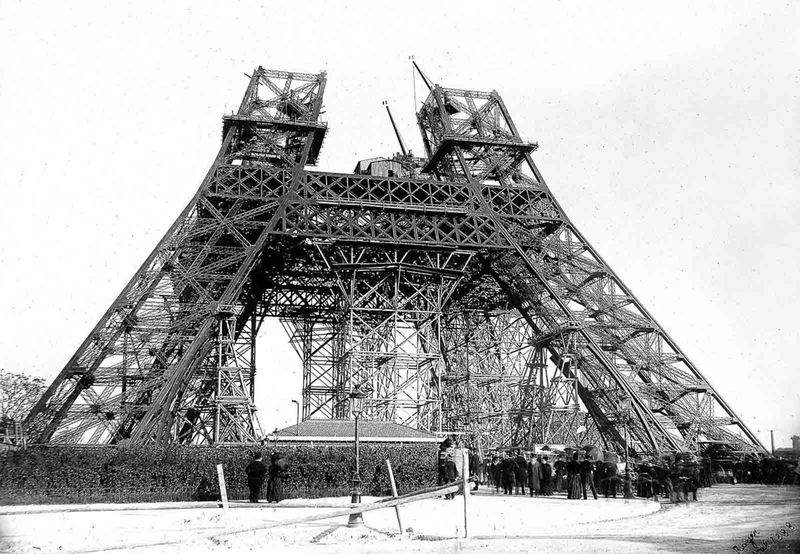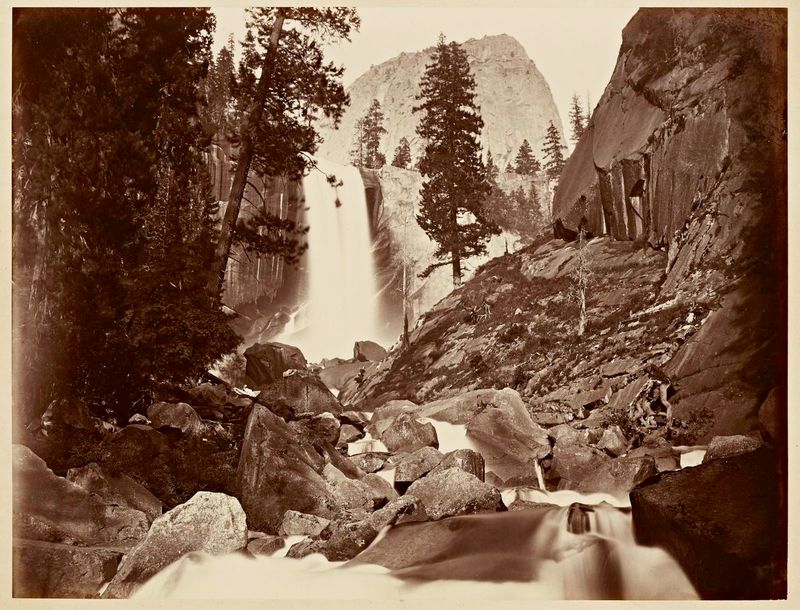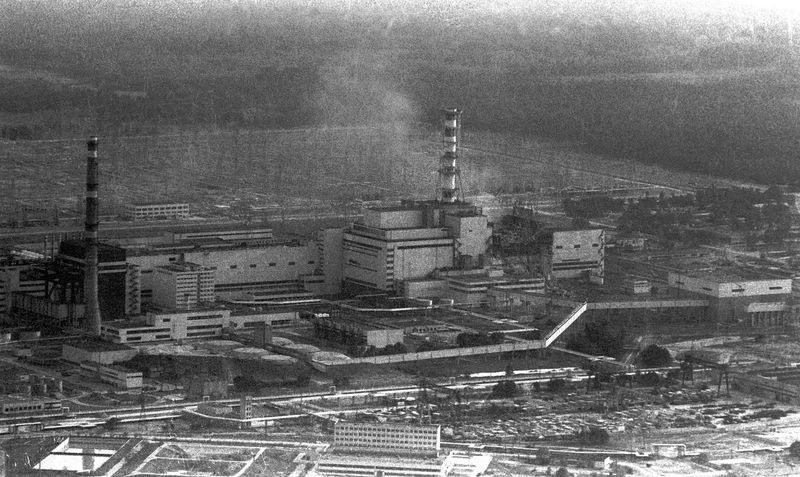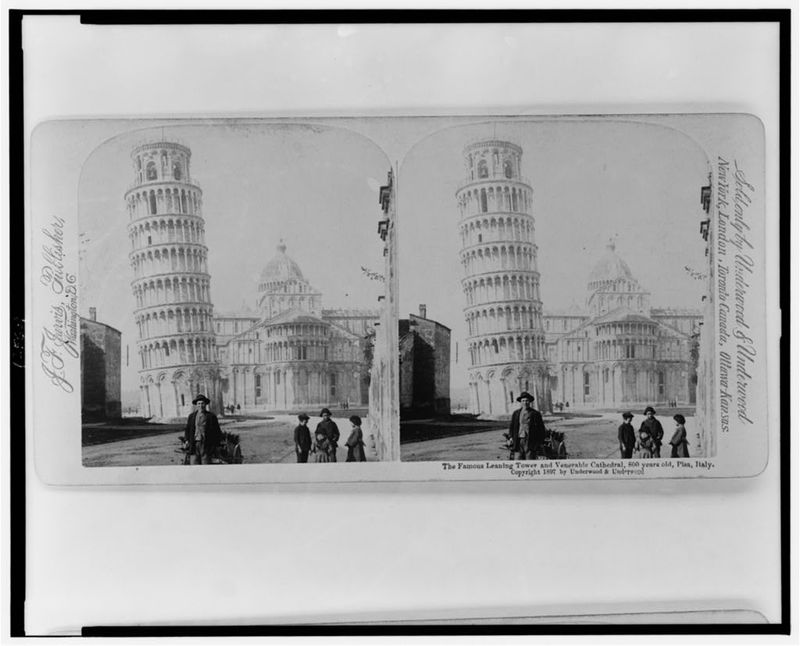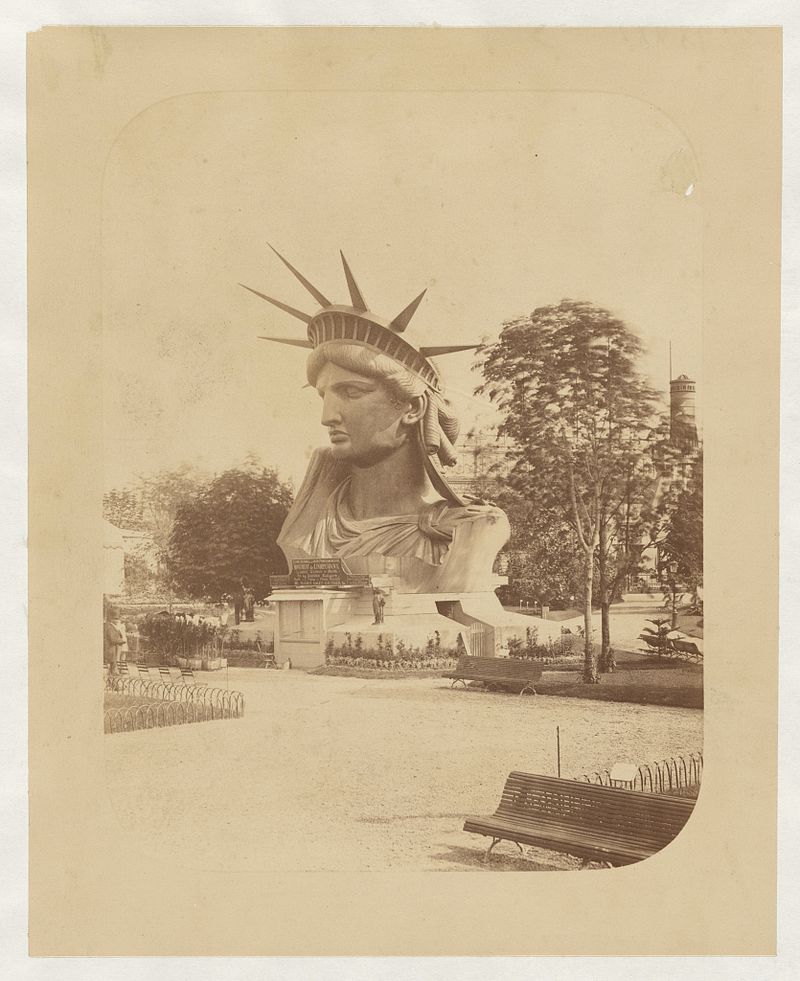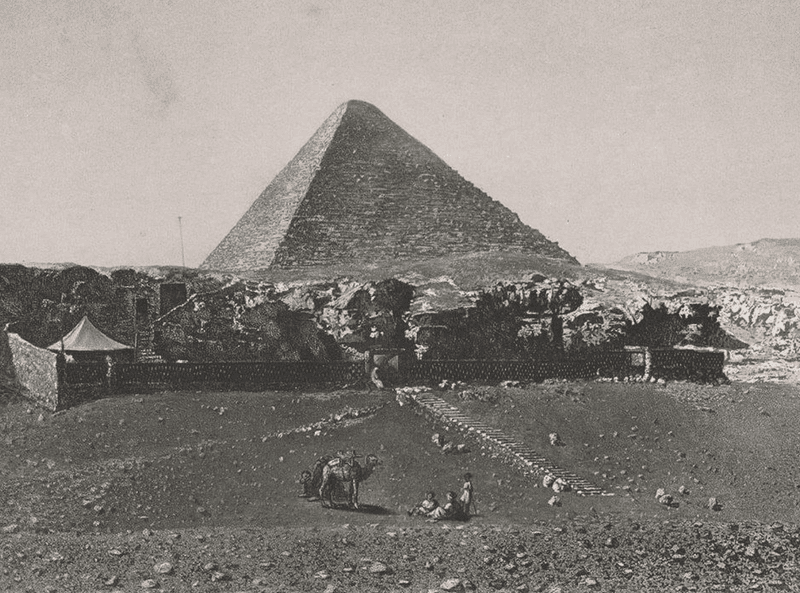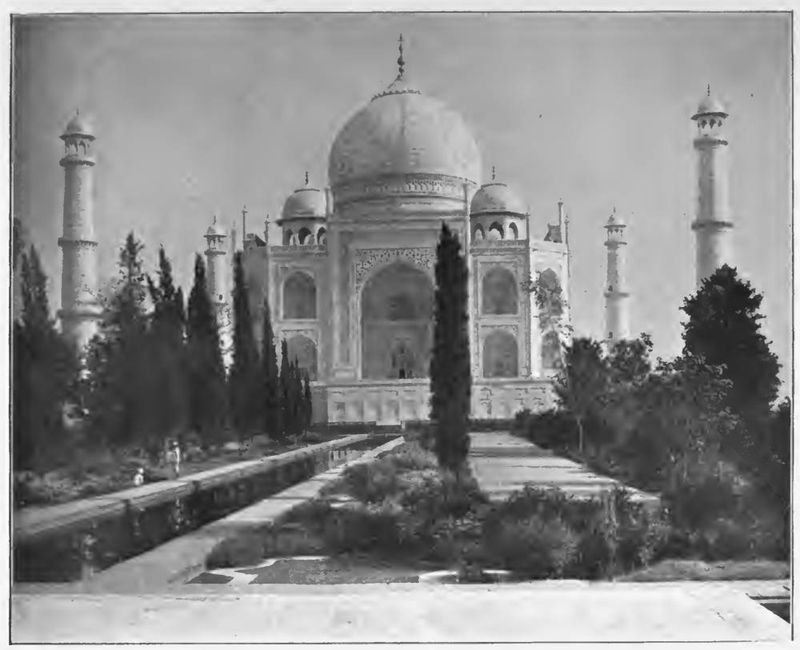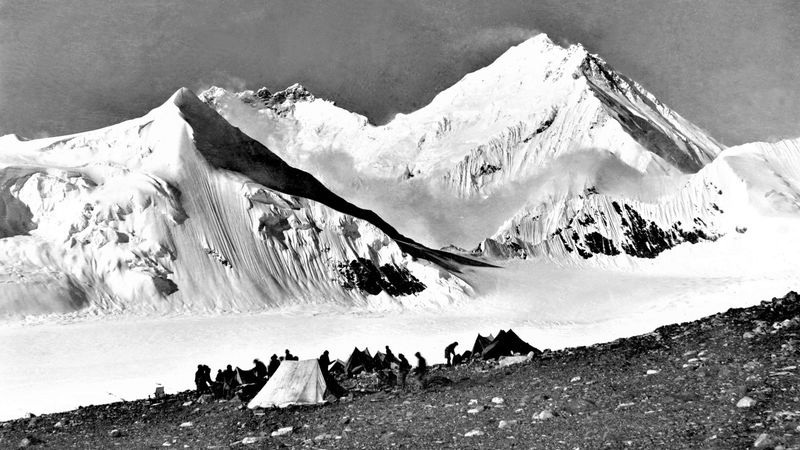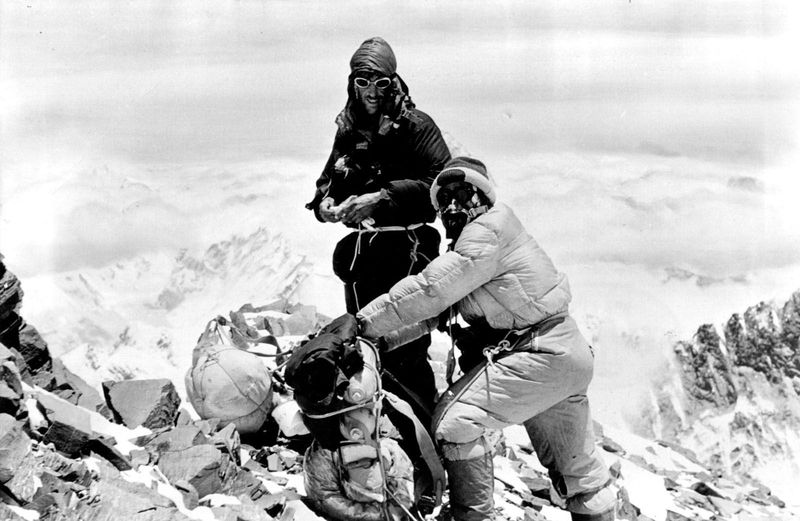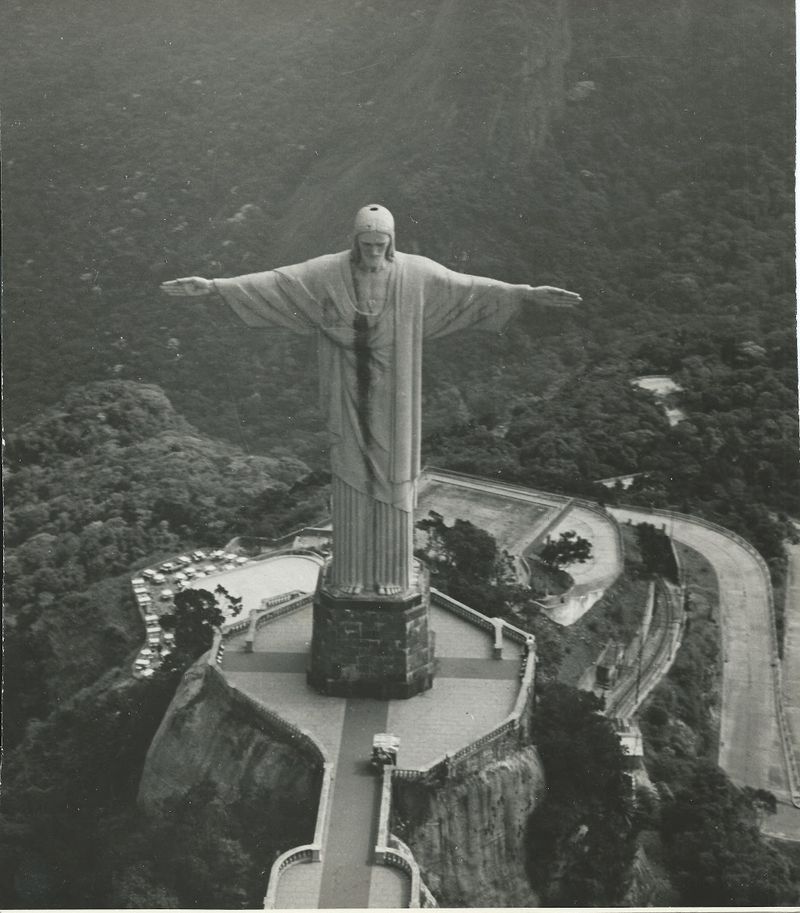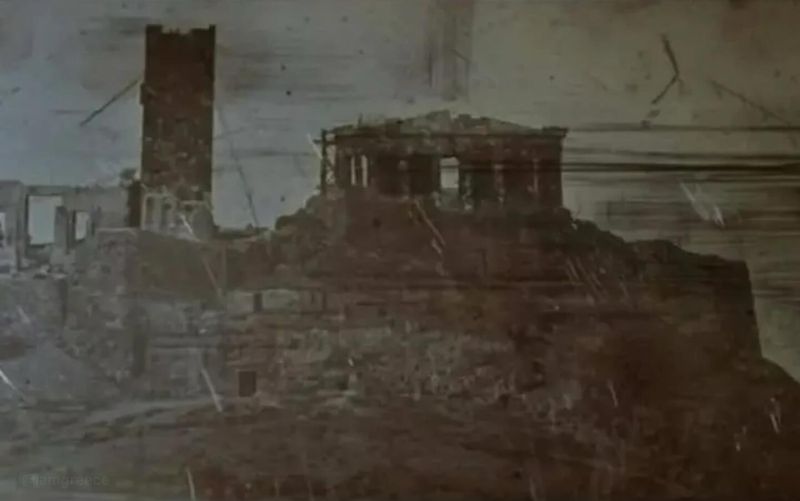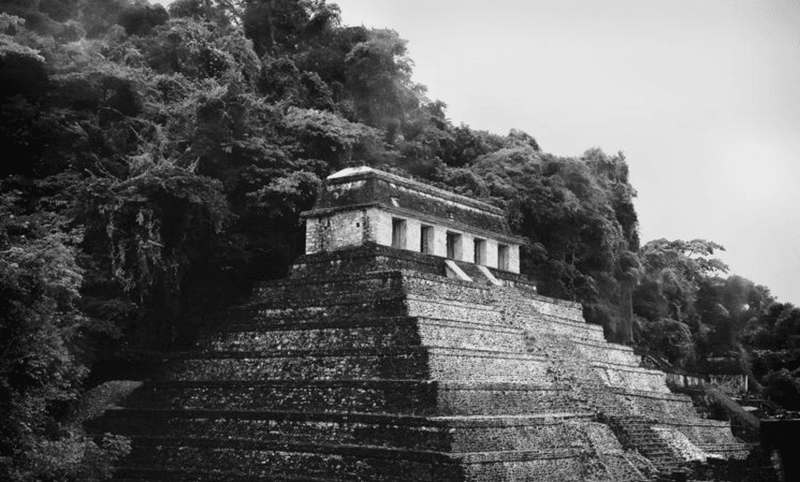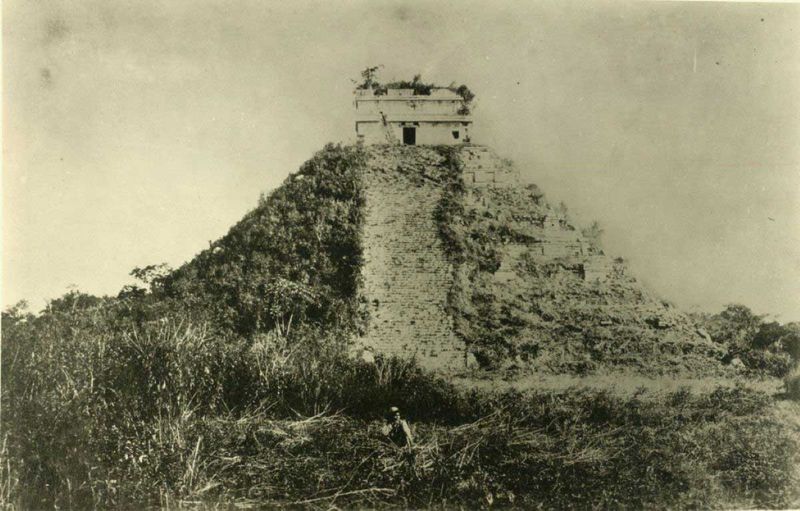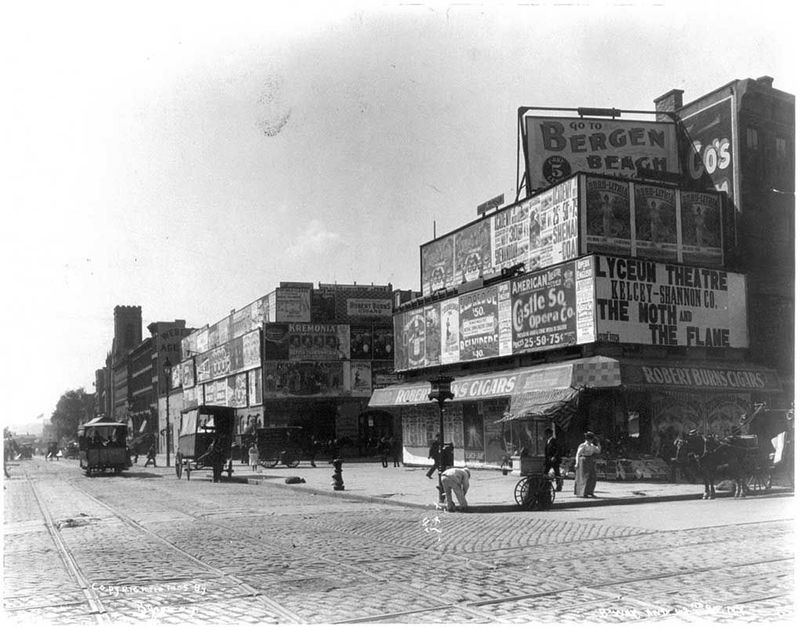History In Photos: 20 Of The Oldest Known Pictures Of Iconic Landmarks
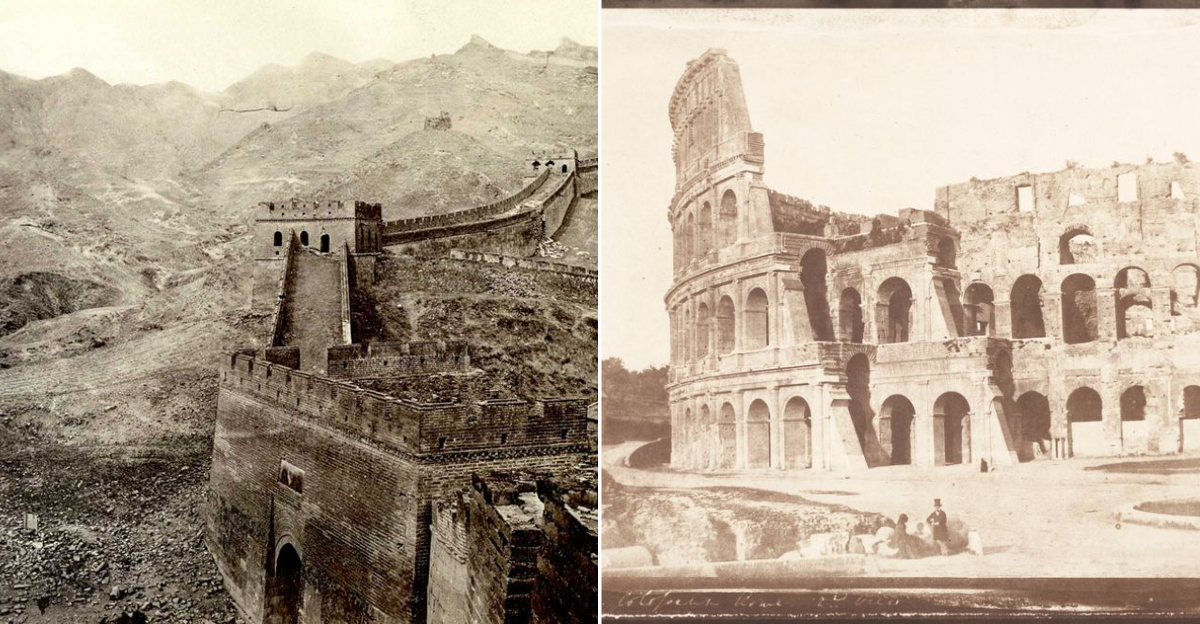
Imagine stepping back in time—long before the crowds, tour buses, and Instagram filters. These 20 rare photographs capture some of the world’s most iconic landmarks, before they became the symbols we recognize today.
Through these snapshots, we can almost hear the whispers of history, feel the dust settling on forgotten ruins, and stand where the first explorers once marveled at these wonders.
Are you ready to journey back in time and see these legendary sites as they once were?
1. The Sphinx in Egypt
The Sphinx has been watching over Egypt for thousands of years, but in the 1800s, it looked very different.
This rare sepia-toned photograph shows the Sphinx partially buried in sand, its massive paws hidden beneath the dunes. Early archaeologists were starting to uncover it, but the mystery of its origins remained unsolved.
Was it a guardian or a tribute to a forgotten pharaoh? No one knew for sure. But in the Egyptian sun, with camera in hand, those early photographers were staring straight into history.
2. The White House, 1846
No limousines. No secret service. No floodlights.
This 1846 photograph of the White House is a glimpse into a much simpler time. The streets were lined with horse-drawn carriages, and Washington, D.C., was still more countryside than the capital city.
The iconic building, designed in the late 1700s, looked much the same, but without security fences, modern additions, or press photographers. It stood quietly as a symbol of a young nation.
Imagine what kind of political conversations were happening inside?
3. Nankou Pass, Great Wall of China, 1870
The Great Wall of China stretches for thousands of miles, but in 1870, one section stood out: Nankou Pass.
This rare photograph captures the rugged beauty of the Wall, winding through misty mountains like an ancient stone dragon. Back then, parts of it were already centuries old, showing signs of battle scars, erosion, and the weight of time.
The wall wasn’t just a fortification—it was a symbol of endurance, a marker of China’s strength. Have you ever visited it?
4. The Colosseum, Rome, 1846
Today, the Colosseum is one of the most visited landmarks on Earth, but in 1846, it was a forgotten ruin.
This early photograph shows the Colosseum with no vegetation, giving the site a quiet, almost poetic beauty. No tourists, no ticket booths.
It’s hard to imagine gladiators fighting to the death here, cheered by 50,000 spectators. Yet, even in ruins, the Colosseum stands as a testament to history’s power.
5. Stonehenge, 1875
Stonehenge has puzzled historians for thousands of years—and even in 1875, no one really knew why it was built.
This rare image shows a Victorian family in a carriage, completely unaware they were passing by one of the world’s greatest mysteries.
Was it a temple? A calendar? A burial ground? Even today, the debate rages on. But one thing is certain—Stonehenge has captivated human imagination for centuries.
6. Grand Canyon, Powell Expedition, 1871
Before it became a national park, before millions of tourists visited each year, the Grand Canyon was still uncharted territory.
This 1871 photograph captures explorers from the Powell Expedition, gazing at the canyon’s breathtaking cliffs, completely unaware they were standing at one of the most famous natural wonders in the world.
The Colorado River snakes through the rock, a silent witness to millions of years of geological history. Untouched nature.
7. Eiffel Tower Under Construction, 1878
Imagine Paris without the Eiffel Tower.
In 1878, the tower was still a skeleton, a bizarre iron framework rising from the cityscape. Many Parisians hated it. Some called it an ugly monstrosity.
But as construction continued, it became clear—Gustave Eiffel’s masterpiece would change Paris forever. Today, it’s the most recognizable structure in France. But in this rare photo, it was still just a dream in progress.
8. Yosemite Falls, 1861
Long before Yosemite was a national park, it was a hidden paradise.
This 1861 photograph by Carleton Watkins captures the thundering majesty of Yosemite Falls, its mist rising like smoke against the mountains.
No roads. No campgrounds. No tourists with selfie sticks. Just pure, wild, untouched nature.
It’s a reminder of what America’s landscapes looked like before modern civilization took over.
9. Chernobyl Disaster, 1986
Some landmarks are born out of tragedy.
This chilling 1986 photograph captures smoke billowing from Reactor No. 4 of the Chernobyl Nuclear Power Plant.
Taken just hours after the explosion, this image is a haunting reminder of one of the worst disasters in human history. The eerie glow, the abandoned machinery—it’s a stark contrast to the bustling city that once existed here.
Today, Chernobyl is a ghost town, frozen in time—a monument to the dangers of human ambition.
10. Tower of Pisa, 1898
Yes, it was already leaning.
This 1898 photograph captures tourists marveling at the bizarre tilt of the Tower of Pisa, proving that even over a century ago, people loved this architectural anomaly.
Even today, no one is quite sure why it leans. But one thing’s for sure—it’s never stopped being a wonder.
11. Statue of Liberty in Paris
Before it stood proudly in New York Harbor, the Statue of Liberty first stood in Paris! This rare photo captures it still in France, waiting to be disassembled and shipped across the Atlantic.
When it was first unveiled in France, Parisians gathered around, admiring the statue without knowing how iconic it would become.
Can you imagine seeing the Statue of Liberty in Paris instead of New York? Would the world view it the same way?
12. Pyramid of Cheops, Giza, 1839
This is one of the oldest known photographs of the Great Pyramid of Giza. At the time, only a few travelers had seen it, and mass tourism was unimaginable.
In the photo, a group of explorers with camels stand in awe before the ancient wonder, which had already stood for over 4,000 years. Even today, the exact method of building the pyramids remains a mystery.
What’s your theory?
13. Taj Mahal, Agra, 1856
This beautiful photo shows the Taj Mahal before it became a major tourist destination. Built in the 1600s by Mughal emperor Shah Jahan as a tribute to his late wife, it was still surrounded by wild gardens, untouched by restoration.
At the time, the Taj Mahal wasn’t fully white—it had layers of dirt and moss covering its marble, making it look different from today. Later restorations restored its gleaming beauty.
Isn’t it stunning?
14. Mount Everest Expedition, 1921
Would you have joined this expedition, knowing no one had ever reached the top before?
This was the first serious attempt to explore Mount Everest. Before 1921, the world’s highest peak was just an impossible dream.
The climbers, wearing heavy wool coats and basic gear, faced brutal cold, thin air, and treacherous terrain.
The photo was taken by George Mallory, one of the early pioneers in the quest to conquer Everest.
15. Tenzing Norgay on Everest, 1953
On May 29th, 1953, Tenzing Norgay stood triumphantly atop Mount Everest, captured in this iconic photograph.
Clad in climbing gear, with an ice axe in hand, Norgay symbolizes determination and achievement. This historic moment marks the triumph of human spirit over the Earth’s highest peak.
His ascent inspires adventurers worldwide to reach for new heights and conquer their own summits.
16. Christ the Redeemer, 1931
Can you imagine Rio de Janeiro without this iconic landmark?
Built on Mount Corcovado, the statue’s outstretched arms symbolize peace, unity, and faith. It took nine years to build, and its construction was a massive engineering challenge—workers had to climb the mountain daily, carrying materials piece by piece!
Today, it’s one of the most visited landmarks in the world, standing as a symbol of hope and resilience.
17. Acropolis of Athens, 1842
The Acropolis, standing high above Athens, is one of the most important historical sites in the world. This 1842 photograph captures the ancient ruins in their unaltered state.
For centuries, the Acropolis was looted, bombed, and even turned into a weapons storage site.
By the time this image was taken, it was already a fragment of its former glory. But even in ruins, it remained a symbol of philosophy, democracy, and the greatness of Ancient Greece.
18. Mayan Pyramids, 1870s
Hidden deep in the jungles of Central America, the Mayan pyramids were still waiting to be rediscovered.
This 1870s photograph shows explorers standing before one of the ancient structures. At the time, these pyramids had been abandoned for centuries, forgotten by the outside world.
Do you think there are still undiscovered Mayan cities out there, waiting to be uncovered?
19. Temple of Chichen Itza, 1900
This early photo captures the Temple of Kukulcán before it was restored to its current state.
At the time, the pyramid was crumbling, covered in layers of dirt, plants, and decay.
Today, Chichen Itza is one of the New Seven Wonders of the World, but this rare photo reminds us of a time when it was just another lost ruin in the jungle.
20. Times Square, 1898-1900
Can you believe Times Square was just another busy intersection in New York City?
Back then, it was called Long Acre Square—a hub for horse-drawn carriages, early skyscrapers, and the city’s growing industries.
Today, Times Square is known as “The Crossroads of the World.” But in this photo, it looks like a completely different place.

